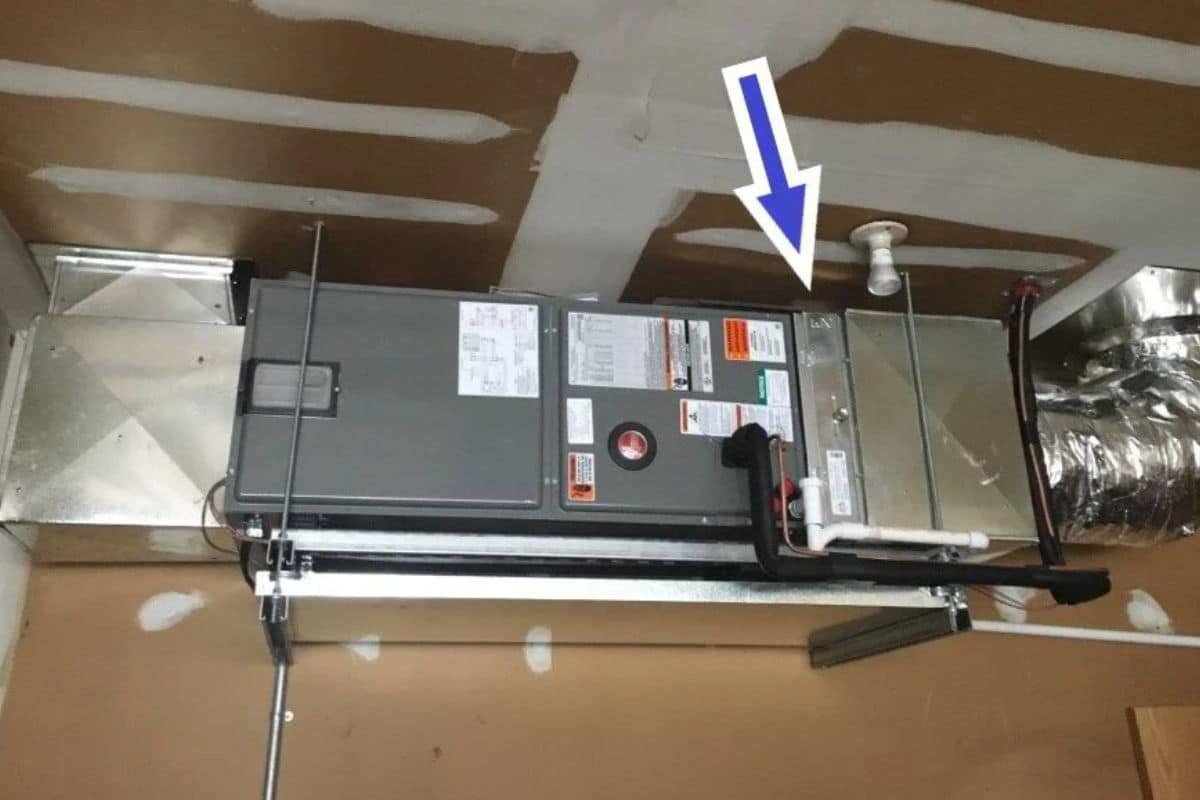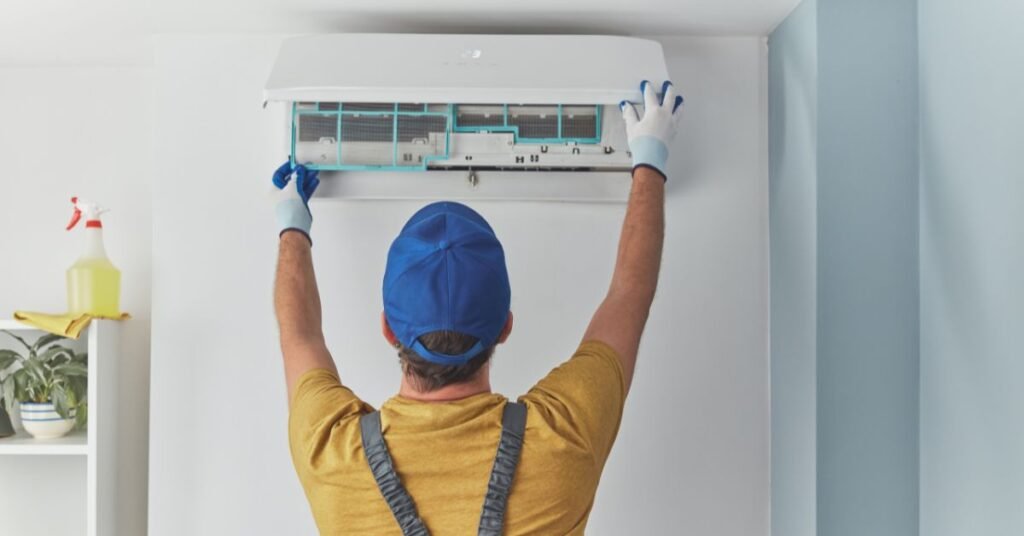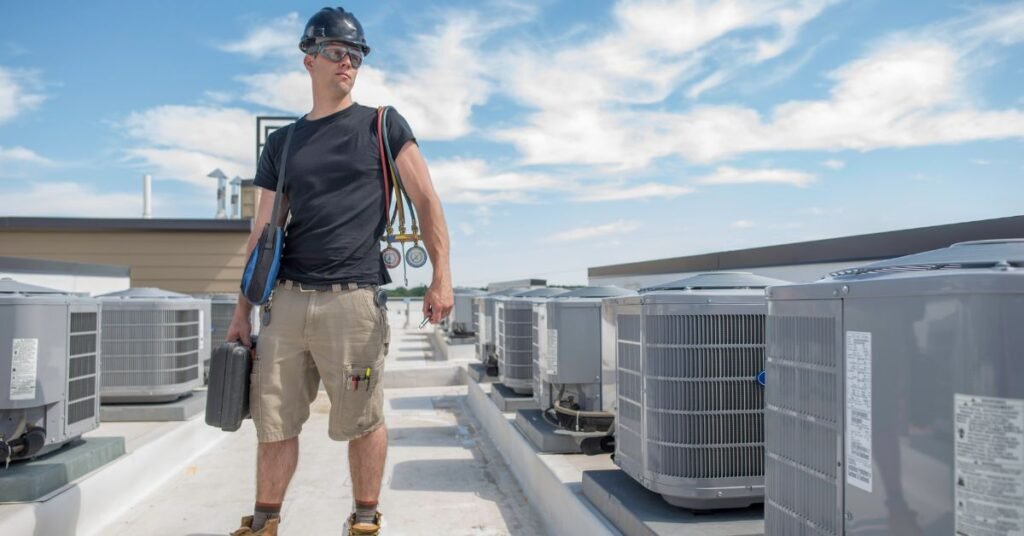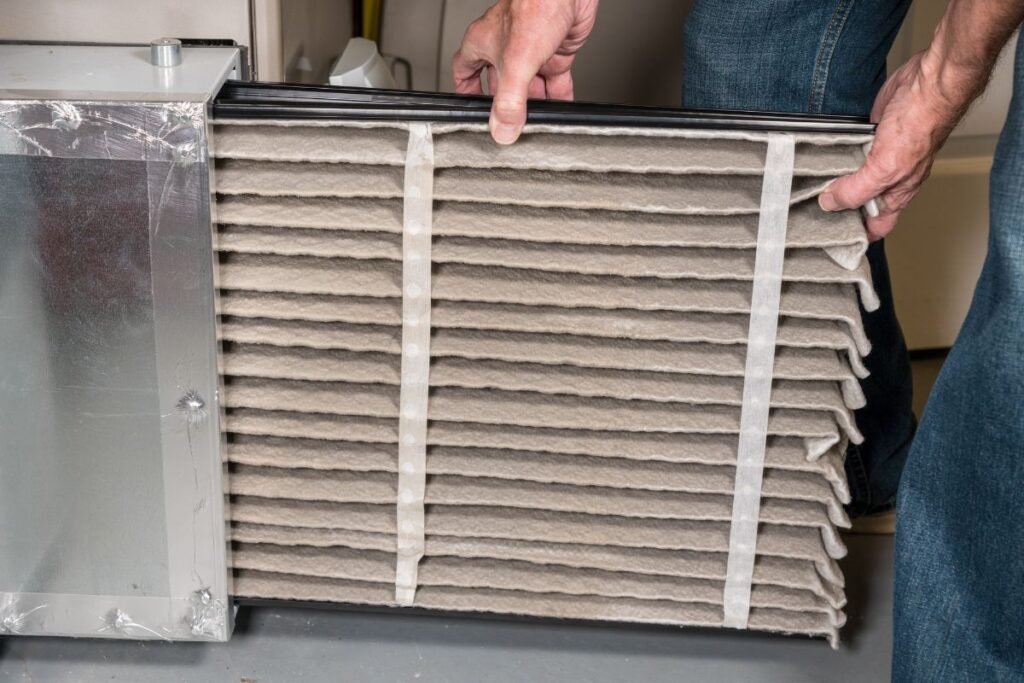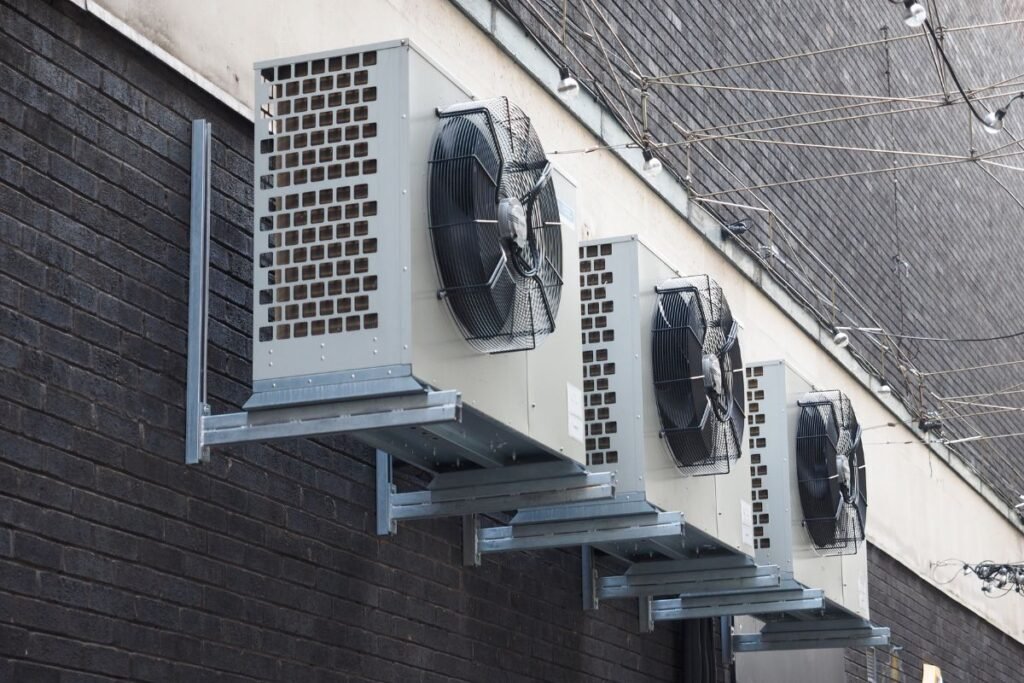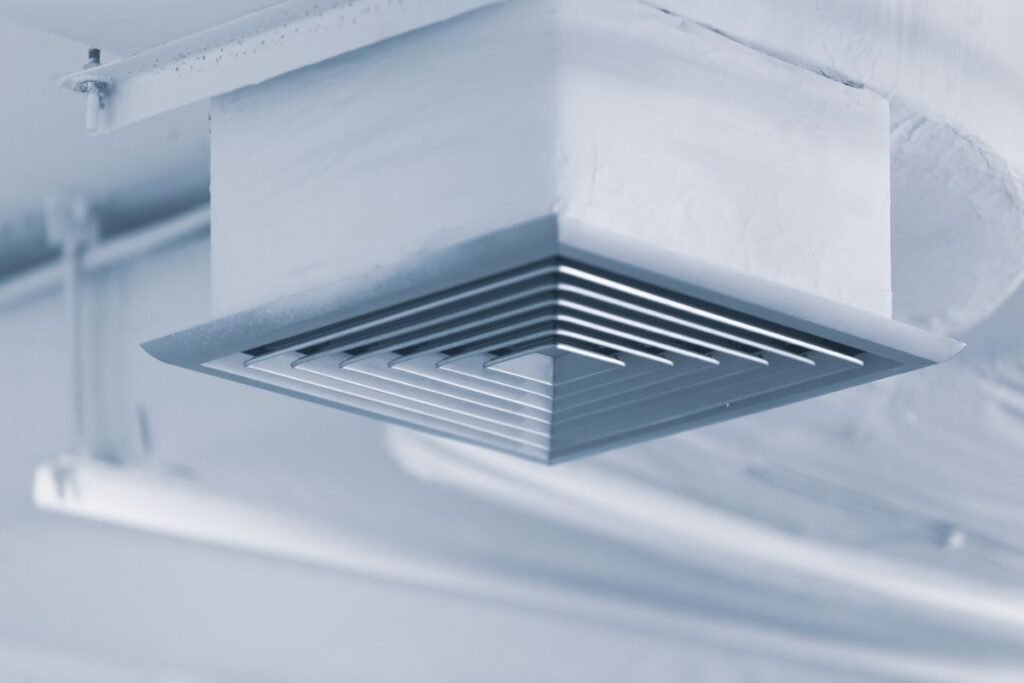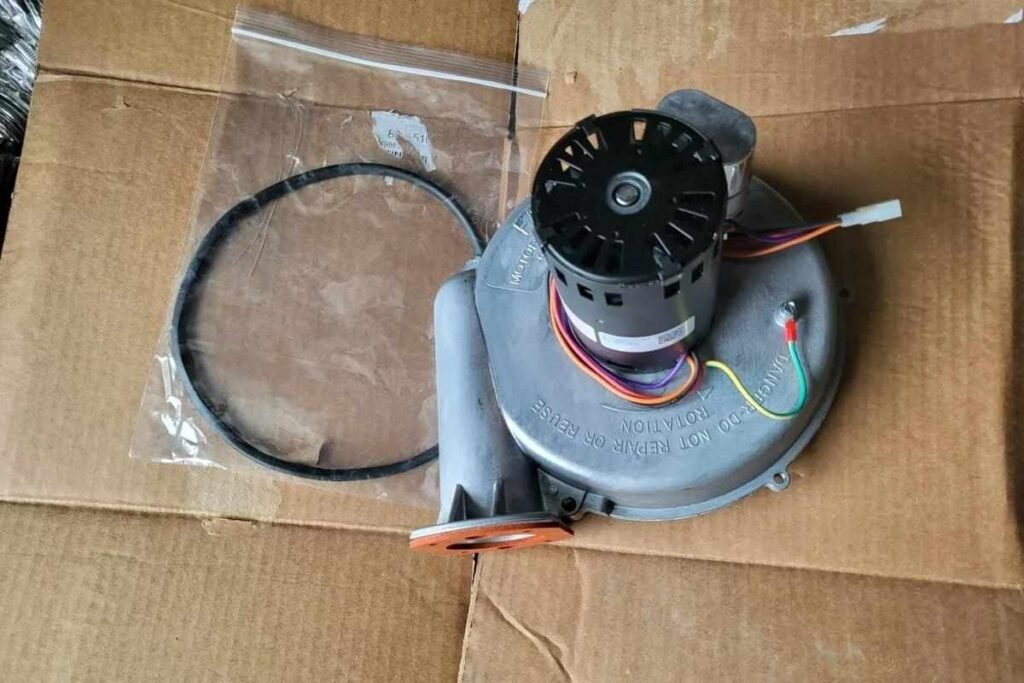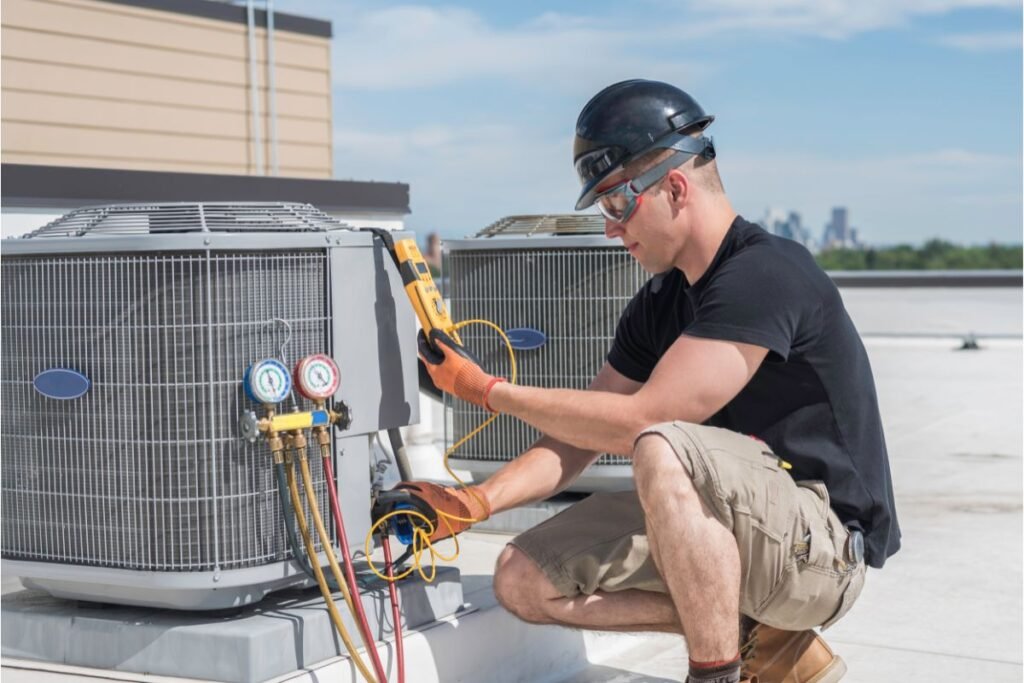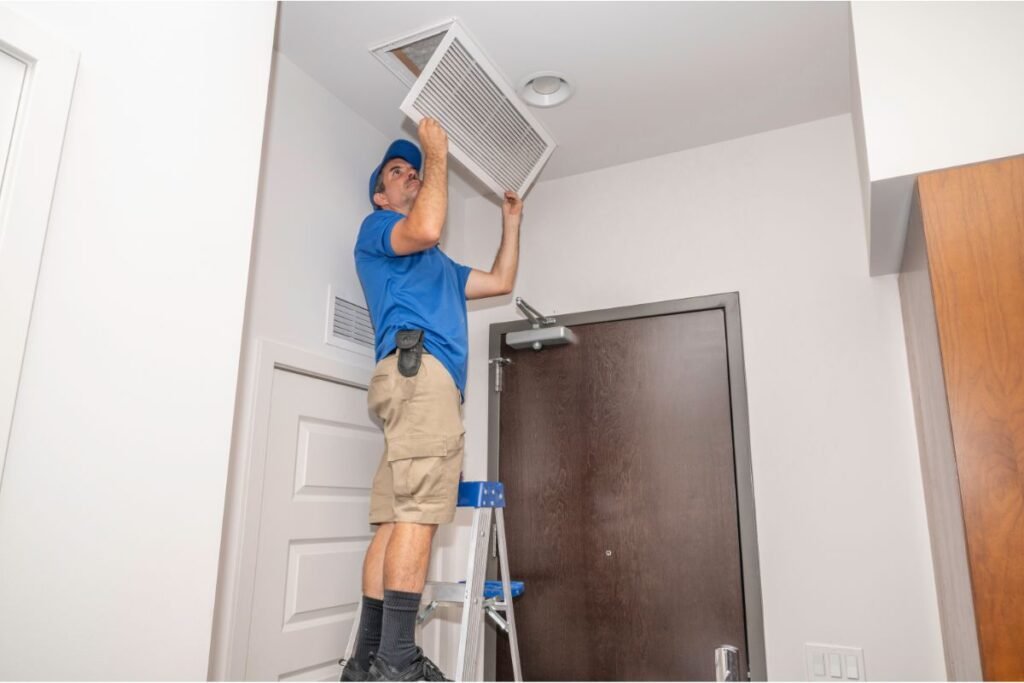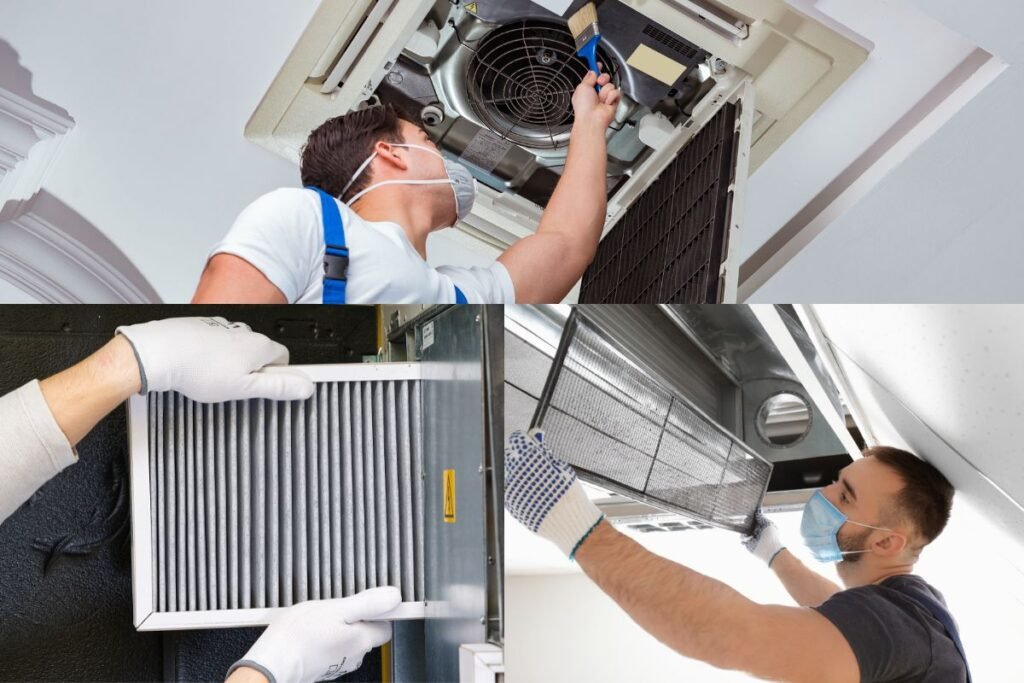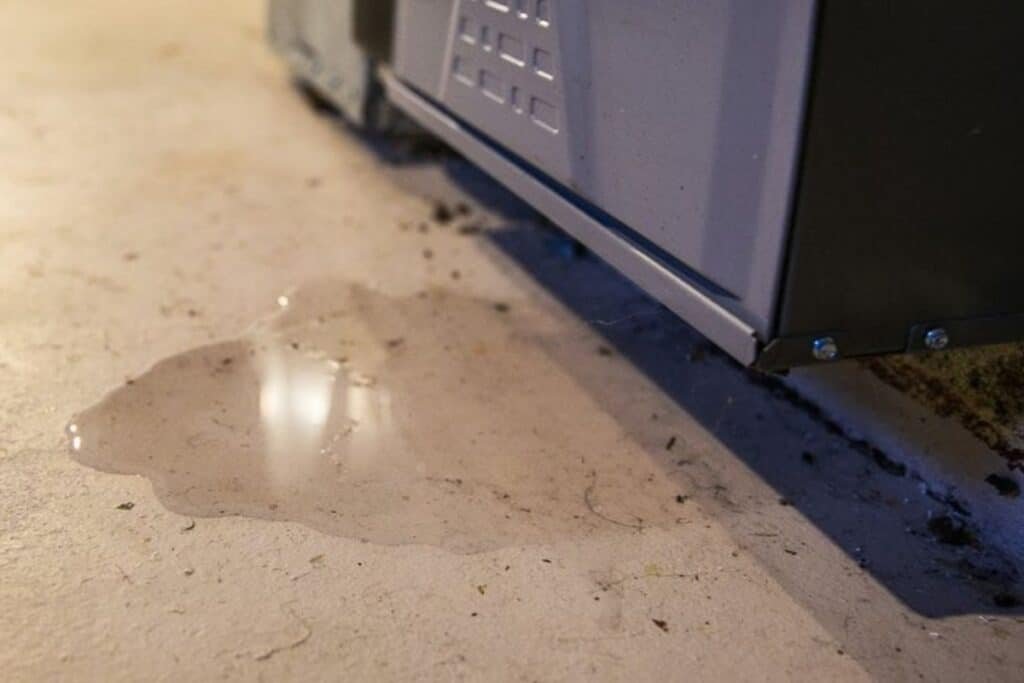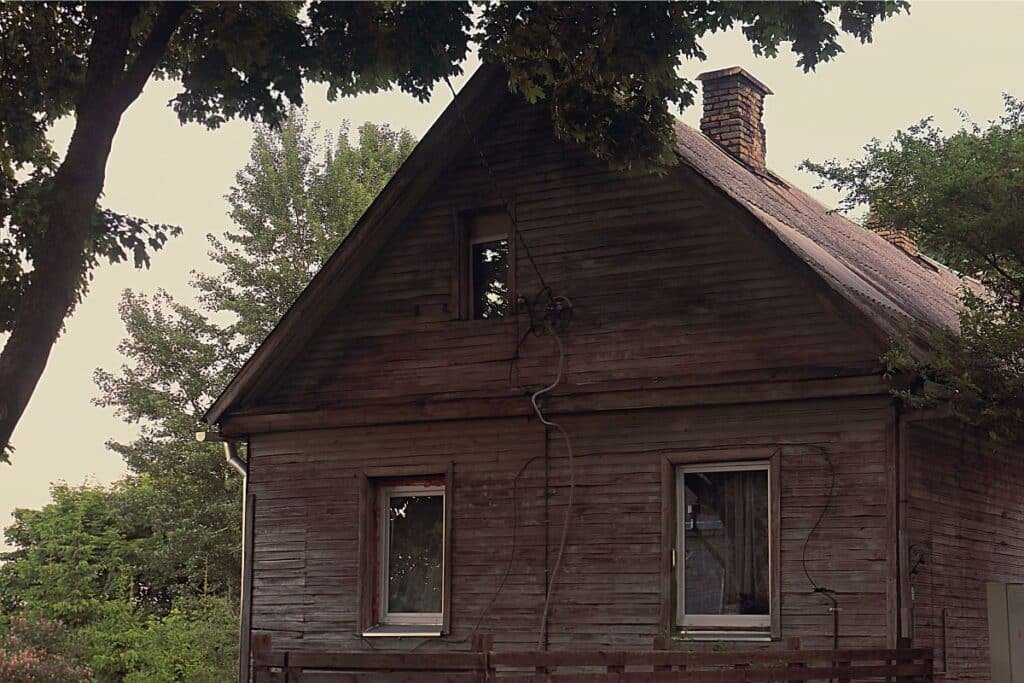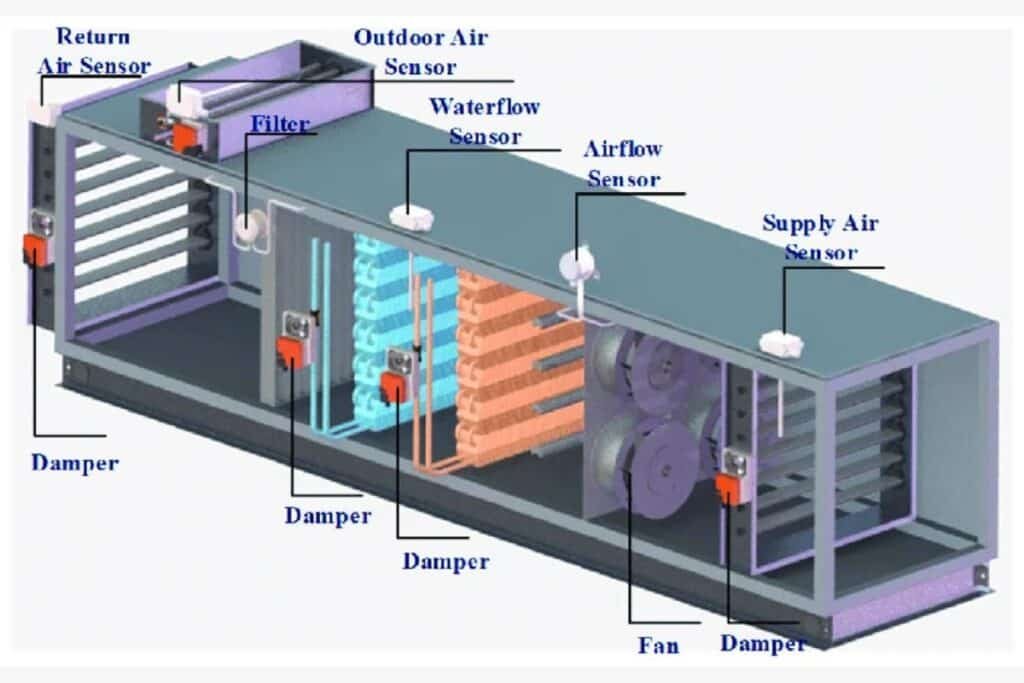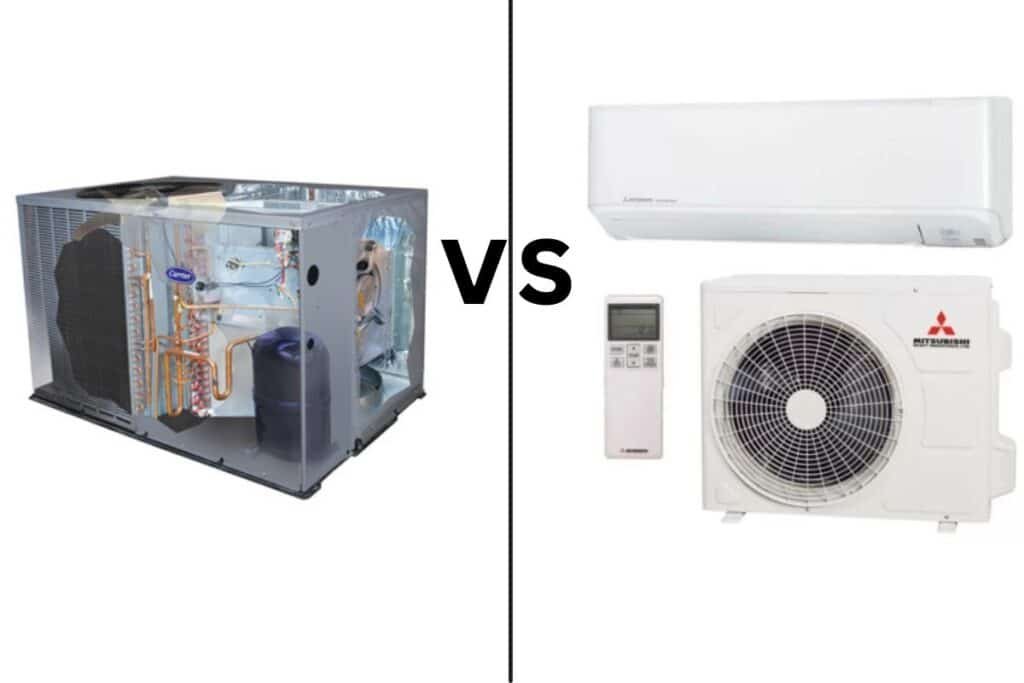FAQs About HVAC Furnace Locations
Not sure where is HVAC furnace located? Knowing its exact location is important for maintenance, fixing issues, and making your home more energy-efficient. If you are looking for the furnace filter location or just making sure everything is running smoothly, this guide will help.
We will show you the most common places where furnaces are located, like basements, attics, and utility rooms, and give you tips on how to find yours quickly. You will also understand why the furnace’s location affects things like energy savings, safety, and how easy it is to take care of. Plus, we will explain how new technology, like smart thermostats, can help improve your furnace’s performance. By the end, you will know where your furnace is and how to keep it in great condition.
Common Locations for HVAC Furnaces
Find out where your HVAC furnace is most commonly located. We cover typical furnace placements in basements, attics, utility rooms, and garages so you can find yours with ease.
Basement Furnace Setup
The basement is one of the most common places to find a furnace, especially in colder climates. It offers a spacious area, easy ductwork access, and natural insulation that helps with energy efficiency.
What to Check:
- Look for large pipes or ventilation ducts along the ceiling or walls.
- If your basement is finished, check for hidden utility rooms or closets that might house the furnace.
Pro Tip: Basement furnaces often have a vent running to the outside. You should check for metal pipes or vent covers that lead to external walls.
Attic HVAC Installation
In warmer areas, where basements are less common, HVAC systems are often installed in attics. They save space and keep the furnace out of sight, but maintenance may be trickier due to harder access.
What to Look For:
- Ceiling access panels or ladders leading to the attic.
- Vents lead into the attic space or near the ceiling.
Pro Tip: If your attic is large, the furnace may be tucked into a corner or near the entry point. Use a flashlight to spot it quickly.
Utility Room or Closet HVAC Systems
In compact homes or apartments, furnaces are often installed in utility rooms or closets to maximize space. Look for vented doors or air handlers because the furnace filter location is frequently nearby.
What to Look For:
- Vented doors or grills near the utility area.
- Check around water heaters or stacked appliances for duct connections.
Pro Tip: If your furnace is in a utility room, it’s often placed near the air handler or water heater.
Garage HVAC Placement
In homes without basements, garage HVAC placement is common. It’s a convenient location but requires extra safety considerations, such as keeping the furnace away from flammable materials.
What to Look For:
- Check for ducts running along the ceiling.
- Look for a furnace placed on a raised platform. It is usually positioned away from flammable items to ensure safety.
Pro Tip: Garages typically have easy-to-spot ductwork or exhaust vents near the ceiling. These usually connect to the furnace.
where is hvac furnace located: A Step-by-Step Guide
Not sure where your furnace is? Follow these clear steps to locate your heating system quickly. We will guide you through common furnace locations and external indicators to know How to Locate Your Furnace.
Follow the Thermostat or Ductwork
One of the easiest ways to locate your furnace is to follow the thermostat wiring or trace the ductwork in your home. These often lead directly to the furnace’s location.
Pro Tip: Look for where multiple ducts meet. This is often where the furnace is installed, typically centrally in the home.
Check Key Locations
Start by checking the most common furnace locations such as basements, attics, garages, and utility rooms. These areas are typically where furnaces are installed in most homes.
What to Check:
- In basements, look for large pipes or ducts along walls.
- In attics, check for ceiling access or vents leading up.
- In utility rooms, you may find the furnace alongside water heaters or other appliances.
Pro Tip: In apartments, check utility closets or behind the water heater. Smaller furnace units are often tucked away in these spots.
Look for External Indicators
Look around the outside of your home for pipes or vents. These often connect directly to the furnace. These can be key clues in finding where your system is installed.
What to Look For:
- PVC or metal pipes extending from your walls.
- Exhaust vents near where the furnace is located.
Pro Tip: Follow these external pipes or vents inside. They often point directly to your furnace.
Still can’t find your furnace? Consider reviewing your home’s inspection reports or blueprints. These documents often contain the exact location of your HVAC system and can save you time.
Why Furnace Location Matters for Your Home
Understanding why furnace location is so important helps you manage energy, reduce maintenance costs, and increase safety. Here’s why the right placement can make a difference.
- Energy Efficiency: Where your furnace is placed impacts energy efficiency. Systems installed closer to living spaces reduce energy loss through ducts, keeping the home warmer without needing extra heating power.
Pro Tip: If you feel uneven heating then check the furnace placement. It may be too far from key areas or have long ducts that waste energy.
- Accessibility for Maintenance: An accessible furnace is easier to service. Regular tasks like changing filters or cleaning ducts become more efficient when the stove is located in an easy-to-reach spot.
Pro Tip: Clear the space around your furnace so it can be serviced without any obstacles getting in the way.
- Safety Considerations: Furnaces need proper ventilation and should be placed away from flammable materials. If your furnace is in a garage or utility room then ensure the space is well-ventilated and meets safety standards.
Pro Tip: Install a carbon monoxide detector near the furnace to monitor air quality and enhance safety.
Furnace Placement Differences by Home Type and Region
Learn how your home’s layout and climate influence where your furnace is typically located. You may more easily identify where your furnace should be installed if you know whether you live in a house or an apartment and if you live in a cold or mild area.
Household Type
- Apartments/Condos: Furnaces are usually placed in closets or shared utility rooms in small living spaces like apartments. This placement maximizes available space and keeps the furnace out of the main living areas. It’s a compact solution ideal for smaller systems.
Pro Tip: Check closets with ventilation slats, as these are commonly used for furnace placement in apartments. Venting ensures the system runs safely.
- Houses: Larger homes typically place furnaces in basements, attics, or garages. The choice of location depends on the home’s overall size, layout, and the amount of available space for ducts. These locations allow for easier integration of the heating system into the structure of the home.
Pro Tip: If your home has a basement, check there first—it’s often the ideal place for furnaces due to space for large ducts and heating units.
Regional Trends
- Cold Climates: In colder regions, furnaces are commonly found in basements. This helps with insulation and ensures that the furnace operates efficiently even during harsh winter months. Naturally, the furnace operates in a more stable and insulated atmosphere in a basement.
- Warm Climates: In warmer regions, furnaces are often installed in attics or garages. These placements help save valuable indoor living space while still allowing the system to operate efficiently. Attics and garages are generally less used as living spaces, so placing the furnace there helps maintain a cool indoor environment.
Pro Tip: Modern homes often pair their HVAC systems with smart thermostats to adjust heating based on the furnace’s location. It makes it more efficient for various weather conditions.
What to Do If You Can’t Find Your Furnace
Can’t find your furnace? These troubleshooting steps will guide you in locating it easily, and we’ll tell you when it’s time to call a professional.
Troubleshooting Steps
Start by checking the most common areas: basements, attics, garages, and utility rooms. Follow ductwork or check for external vents that might point to the furnace.
Pro Tip: If you can’t find it, review your home’s blueprints. They can help locate the furnace quickly.
When to Call a Professional
If your furnace is still hidden or difficult to access, consider calling a professional. They can locate your furnace and ensure it’s working properly, saving you time and effort.
Pro Tip: While a technician is at your home, ask for a maintenance check to ensure your furnace is in good condition.
How Furnace Size Affects Its Location
The size of your furnace affects its placement in your home. Learn how to select the best location based on the furnace’s size and design for efficient heating.
What to Consider:
-
Larger furnaces require more space and may be found in basements or garages.
-
For smaller homes, compact furnaces can be placed in utility rooms or closets.
Pro Tip: Check the manufacturer’s instructions for required clearance and ventilation when placing a furnace in tight spaces.
Furnace Placement and Noise Considerations
Noise from your furnace can be an issue if it’s not placed in the right area. Learn how to minimize furnace noise with the right placement in your home.
What to Consider:
-
Basements’ furniture is usually quieter because they are farther from bedrooms and living areas.
-
Attic or garage furnaces may be louder and cause vibrations, especially if not properly insulated or mounted.
Pro Tip: Put your furnace in a spot where the noise won’t bother living areas. This is especially important in homes with more than one level.
Furnace Placement for Optimal Airflow
Proper airflow is crucial for an efficient furnace. Learn how furnace placement affects air circulation and how to optimize airflow in your home.
What to Consider:
-
Central placement is ideal for even heat distribution and good airflow throughout the home.
-
Furnaces in attics or distant locations may result in uneven heating due to longer ductwork.
Pro Tip: Minimize duct runs and avoid placing your furnace in corners or isolated areas for the best airflow and heating efficiency.
Furnace Location and Seasonal Efficiency
Seasonal changes can impact furnace efficiency. This section explains how the location of your furnace can affect heating costs and performance during different seasons.
What to Consider:
-
Basement furnaces generally perform well in the winter because they are insulated by the ground.
-
Attic furnaces may struggle in extreme heat during the summer, leading to higher energy consumption.
Pro Tip: For better year-round performance, ensure your furnace is in a location that offers natural insulation and avoids extremes in temperature.
HVAC System Integration with Smart Technology
Modern HVAC systems can be paired with smart technology for greater efficiency. Learn how furnace placement plays a role in smart home integration.
-
Smart thermostats and smart vents can be used to control furnace settings based on location.
- Centralized placement of the furnace improves smart system control, ensuring energy savings.
Pro Tip: Consider installing a smart thermostat or smart zoning system to manage heating in various rooms more efficiently, especially if your furnace is located far from the main living areas.
Get in Touch with Big Apple Air – Your Trusted HVAC Solutions Expert
Looking for reliable HVAC solutions? Big Apple Air delivers top-notch commercial HVAC services and emergency HVAC repair service to keep your systems running smoothly. Whether you need routine maintenance, fast repairs, or complete system installations, our experienced technicians are ready to help. We specialize in providing energy-efficient and affordable solutions for businesses of all sizes. With 24/7 emergency services, you can count on us anytime you face unexpected HVAC issues. At Big Apple Air, customer satisfaction is our priority, and we’re committed to delivering exceptional service every time. Contact us today to schedule an appointment or request a free quote!
Conclusion
It is very important to know where your HVAC furnace is located because it keeps your home comfortable and safe. Regularly checking the furnace filter location and making sure everything is working well can help your furnace run smoothly and save on energy costs.
In this guide, you have learned where furnaces are commonly found, such as in basements, attics, utility rooms, and garages. You have also learned why the furnace’s location affects safety, maintenance, and how much energy it uses. We also covered how smart thermostats can help your furnace work better.
Now that you know these important details, it’s time to take action. Schedule maintenance for your furnace, or contact a professional to make sure everything is in good shape. This will help your furnace last longer and work more efficiently.
Call to Action: Don’t wait, ensure your furnace is working well today. Reach out to a heating expert for an inspection or check out our other helpful tips to keep your home in top shape.
Where Should a Furnace NOT Be Installed?
A furnace should not be installed in unventilated spaces like closets, crawlspaces, or bathrooms. These areas lack proper airflow, which can lead to overheating, rust, or even carbon monoxide buildup. Always place your furnace in a dry, well-ventilated space that allows easy maintenance.
Can a Furnace Be Moved to a New Location?
Yes, a furnace can be moved, but it can be costly and complicated. Moving it may require updating ductwork, gas lines, and electrical connections. While relocation can fix noise problems or improve efficiency, you should get a professional inspection and cost estimate before making a decision.
How Does Furnace Placement Affect Heating Costs?
Furnace placement directly affects heating efficiency and energy bills. Placing it far from living areas or in uninsulated spaces like attics can cause heat loss and higher energy costs. A central, well-insulated location reduces energy waste and ensures even heating throughout your home.
What Are the Signs of a Poorly Located Furnace?
Signs of poor furnace placement include:
- Uneven heating in different rooms.
- High energy bills.
- Frequent repairs or loud noises.
- Long wait times for rooms to heat up.
If you notice these problems, consider having an HVAC professional inspect your furnace location and ductwork.
Where is my furnace filter located?
Most furnace filters are inside the furnace or near the return air vent. You might find it in the blower compartment or behind a panel. In some homes, filters are in wall or ceiling vents. If you’re not sure, check your furnace manual or take a quick look around the unit.
Where does the furnace filter go?
The filter usually slides into a slot inside the furnace, close to the air intake or blower motor. Just make sure it’s facing the right direction. Filters have arrows printed on the side, those arrows should point toward the furnace.
Does every furnace have a filter?
Yes, almost every furnace has a filter. Its job is to catch dust and dirt so your furnace doesn’t get clogged. But if you have an older furnace or a different type of heating system, it might not have one. If you’re unsure, double-check the manual or ask a professional.
Where is the furnace usually located in a house?
Furnaces are often in basements, garages, attics, or utility rooms. Sometimes, they’re tucked away in closets or crawl spaces. If you can’t find yours, follow the vents because they will lead you right to it.

